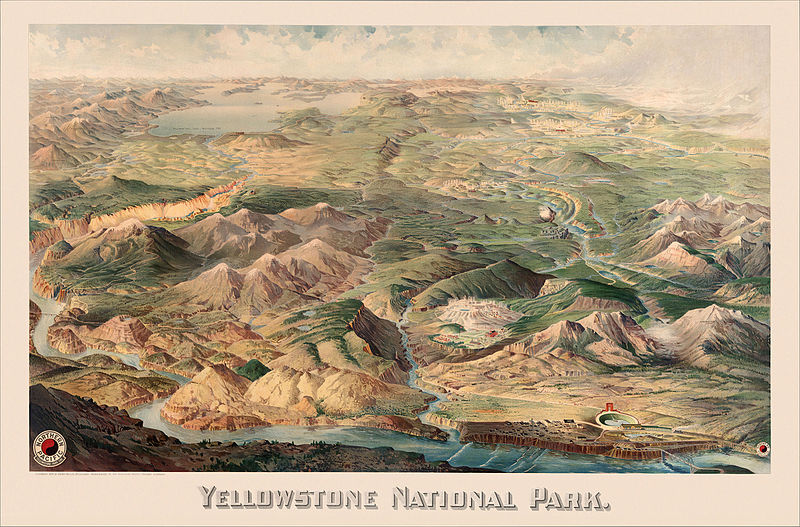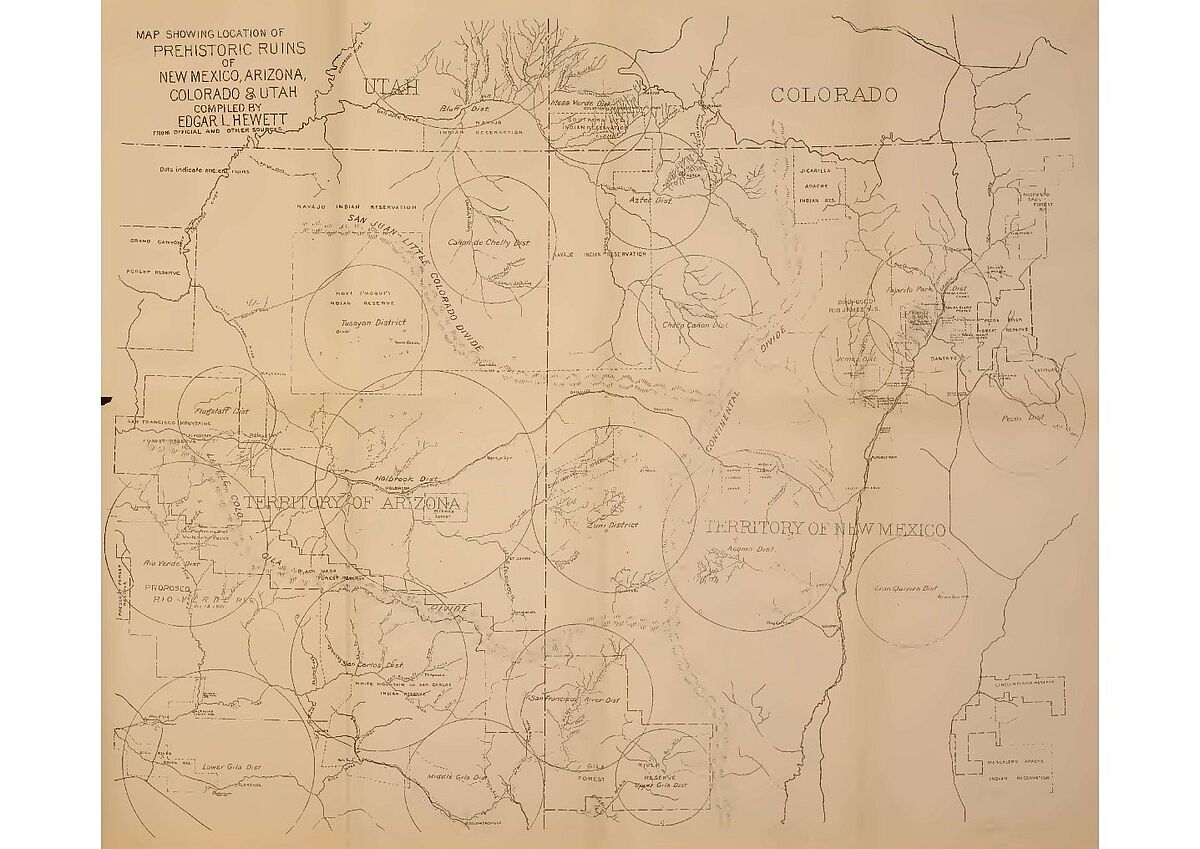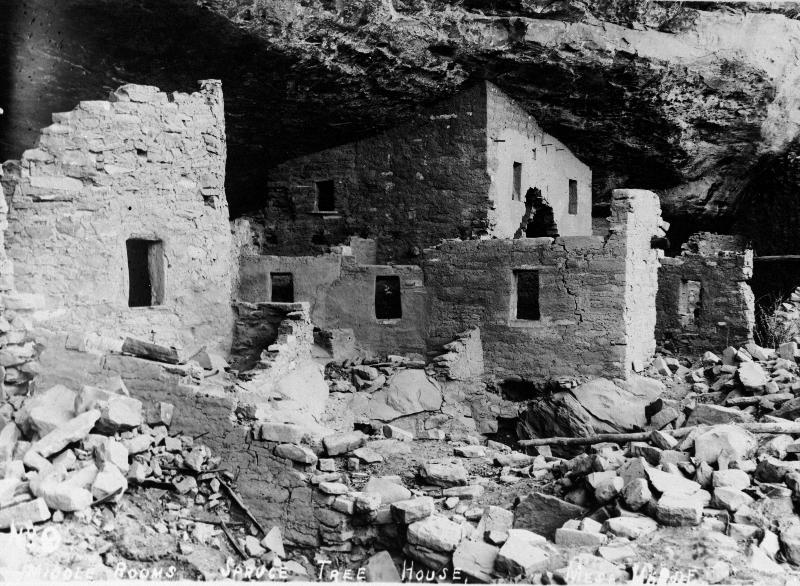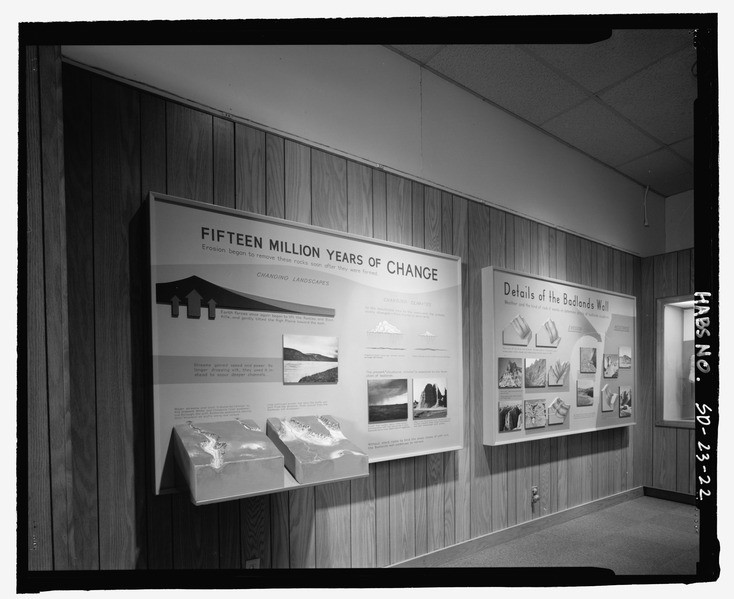National Parks and American Antiquity
by Alexander Bräuer, 03/05/2016.
Summary
“The National Park Service invites you to discover American history in all its diversity, from ancient archeological places to the homes of poets and presidents to the sobering stories of Civil War soldiers and civilians to the legacy of a courageous woman who refused to give up her seat on a bus. Our history is part of who we were, who we are, and who we will be.”[1] The National Park Service (NPS) in the United States – from whose website this quotation was taken – will celebrate their centennial in August this year. Over the last 100 years, the institution created confined spaces for the experience of American history and thereby also provided an institutional background for the construction of an American antiquity. However, how history, and specifically antiquity, was constructed in National Parks (NPs) has changed over the last 100 years. The following article will outline some of the developments during this timeframe in order to create a picture of how institutions like the NPS could influence the construction of American antiquity.
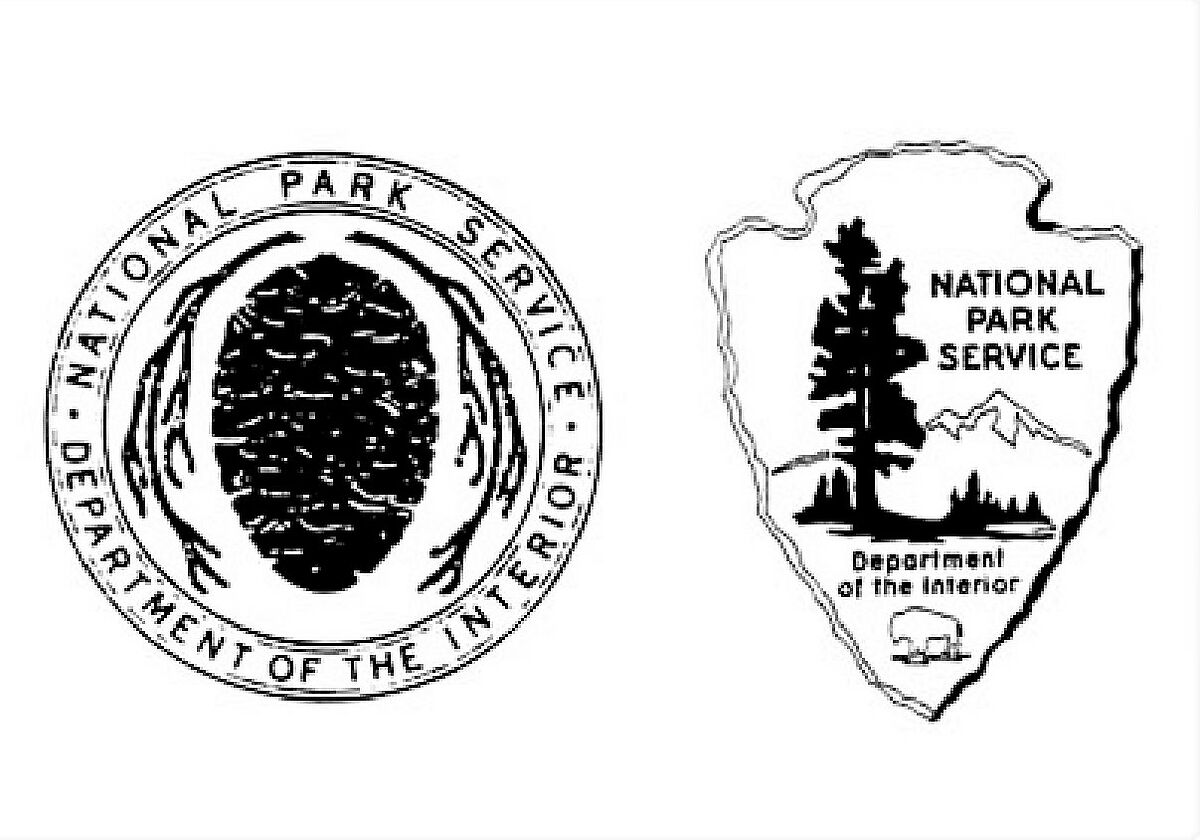
Institutional History
Before we take a closer look at the history of the NPS, we have to address two important questions: What is an institution and why do institutions matter for the construction of American history? Generally, institutions are characterized by recurring and expectable patterns of behavior, inheriting a certain – often hierarchical – structure or order. The current concept of institutions is strongly influenced by the rise of the modern state in the 19th century and the use of institutions as effective tools of modernization. Government agencies have become the prototypes of institutions, although in the wake of the ongoing globalization more and more non-governmental organizations are getting recognized as institutions as well. Indeed, international corporations share many characteristics with government institutions. Over the last 200 years, institutions had a huge impact on the creation of knowledge about history. Schools, universities and museums are just a few examples of how institutions collect, process, transfer, distribute and thereby create knowledge about the history of America. Naturally, most government institutions concentrate their efforts on the history of the nation-state itself.
Yellowstone National Park
The idea of a national park service originates with the foundation of the Yellowstone National Park in 1872, roughly 40 years before the creation of the National Park Service in 1916. After an exploring party under Ferdinand Hayden had surveyed the Yellowstone area in 1871, the members of the party lobbied extensively with their reports, photographs, and maps for the foundation of a national park in order to protect the geological and natural features of the region. The establishment of the Yellowstone National Park would serve as a model for the creation of national parks in the following decades as many of them were initiated by highly motivated private persons who possessed excellent connections to wealthy and politically powerful people on the East Coast. Ideas about an American antiquity did not play a role in the first phase of national park foundations after 1872. All national parks were selected for their landscape, natural features, wildlife or geological formations. To some extent, these criteria represented the contemporary ideas about American history which began with colonization and downgraded the pre-Columbian period as natural history. To preserve natural history, wildlife, and pristine and untouched landscapes was the goal of strong outdoor and naturalist movement led by famous figures like John Muir and it went on to become the sole reason for the foundation of the few early national parks. The military and selected officials of the United States Department of the Interior undertook the management of the first national parks. There was no need for a new institution, because administration and preservation constituted the only goals of the NPs and were easily achieved by a small staff. In the following 40 years, only few national parks were added and all came under the supervision of established institutions like the military, which would go on to use some NPs as military training fields. Until today the corps of engineers is assisting with constructions in NPs and the military origin of the National Park Service is present on a multitude of levels.
Antiquities Act of 1906
In an already established fashion Edgar Lee Hewett, an archaeologist in New Mexico, lobbied at the beginning of the 20th century for the creation of a series of national parks on public land. However, an influential report by Hewett in 1904 not only demanded new national parks of previously unknown dimensions, but brought up a new argument for their creation: the protection of Native American heritage and ruins. Hewett claimed that “Every cliff dwelling, every prehistoric tower, communal house, shrine and burial mound is an object which can contribute something to the advancement of knowledge, and hence is worthy of preservation.”[2] His argument was presented with a certain urgency because of the devastating effects of an upcoming trade with antiquities, especially Native American pottery, ransacked from the ruins, and the popular conception of Native Americans as a dying race (read more on the Antiquities Act of 1906). In 1906, Mesa Verde, the first national park to protect Native American heritage, was created in Colorado to preserve the 4,000 archaeological sites of the Puebloan people. Furthermore, the Act facilitated the establishment of a number of other areas of protection used for Native American ruins like national monuments or the National Forest.
The Foundation of the NPS
The Antiquities Act of 1906 led to the establishment of the NPS as the leading institution for the supervision of national parks in 1916. The bigger scale of the national park system and the new responsibilities were outlined in the National Park Service Organic Act of 1916: “which purpose is to conserve the scenery and the natural and historic objects and the wild life therein and to provide for the enjoyment of the same in such manner and by such means as will leave them unimpaired for the enjoyment of future generations.”[3] This act led to the creation of a new federal institution, the National Park Service, which assumed the management held until then by the War Department, the Department of Agriculture or officials appointed directly by the United States Department of the Interior. Assisting in the scientific research of ruins and nature and providing for public access to the national parks became key functions of the NPS. The NPS promoted a specific and public type of American antiquity where nature, landscape, and human ruins became indistinguishable. The NPS saw a further reconsolidation under President Franklin D. Roosevelt in 1933 when the management of historic Civil War sites by the War Department and national monuments by the Department of Agriculture were transferred to the new institution. Moreover, the national park system grew by adding areas on the West Coast, Alaska and in the eastern states.
Mass tourism and Mission 66
This geographical shift was significant, because NPs became popular holiday destinations. Tourism, fueled by an enthusiasm for outdoor activities and nature, new found time for recreation and leisure, and the revolution of individual transportation, increasingly characterized the NPs now situated closer to the population centers on the coasts. NPs not only provided tourists with recreational value, but also educated them on the natural and human history of the nation. Museums in the cities put excerpts from the archaeological sites on display for tourists who could, if desired, later visit the NPs and experience the whole significance and value of the archaeological sites and the history they represented. Mission 66, a program laid out in 1952 for the 50-year celebration of the NPS in 1966, highlighted the shift to mass tourism by upgrading park facilities to modern standards. Administrative services, roads, overnight facilities, security, parking infrastructure, and employee housing were all expanded. The new visitor centers provided information that guided tourists safely through the nature and the history of the national parks.
As the visitor centers were invented, interpretation services such as museums, educational trails, signboards, and guided tours increased dramatically. Although the emphasis was still on the recreational value and natural beauty of the landscape, antiquity and Native American heritage became an important part of the canonical visiting information – usually in between an explanation of the geological evolution and the history of the European impact. This was also true for national parks created for their natural and geological features. The touristic use of such areas at times interfered with the continued used of the national park sites by indigenous people who held many of these sites sacred.
The NPS today
Today, the National Park Service and the system of national parks is seen as one of the greatest achievements of the United States and several nation-states tried to replicate its success during the last 100 years. Park Rangers are depicted as figures of outdoor all-round talents with a heart for the environment. Generations of Americans have experienced national parks as positive areas of recreation, holiday, outdoor sports, and historical education. However, recent reports[4] highlighted some of the problems the NPS faces today. For example, it by design confines its historical research and narrative mostly to the artificial borders of the National Park, thereby making history and American antiquity something exceptional and disconnected from the everyday life of the visitors. This narrative is further encouraged by the holiday character of visits to national parks. It remains to be seen if the NPS can drive home the argument that Native American heritage and antiquity also exist outside of the boundaries of national parks, including the population centers most tourists call home. The NPS is prevented from realizing this larger educational goal by a number of problems typical for many public institutions like chronical underfunding of historical projects and the increasing value on the experience of nature. Furthermore, it becomes more and more important for the NPS to deconstruct the idea of a pristine nature. National parks developed on land that Native American people actively and consciously worked and shaped for centuries. Landscapes, soils, and natural resources like water, plants, and game were often carefully stewarded and managed in order to provide for Native American communities. Native American cultures in many places produced a form of ‘nature’ that explorers and settlers later described as ’pristine’. Indeed, over the last 100 years the NPS has done the same by preservation measures, reintroduction of animals and plants, fire management, or infrastructural constructions.
NOTES
[1] http://www.nps.gov/history/ accessed 03/03/2016.
[2] Hewett, Edgar L. Historic and Prehistoric Ruins of the Southwest and their Preservation. Washington: Govt. Print. Off., 1904, p. 3.
[3] http://www.nps.gov/grba/learn/management/organic-act-of-1916.htm accessed 03/03/2016.
[4]See for example: “Imperiled Promise: The State of History in the National Park Service” by the Organization of American Historians. http://www.oah.org/programs/the-oah-national-park-service-collaboration/imperiled-promise-the-state-of-history-in-the-national-park-service/
ILLUSTRATIONS
Figure 1: Emblems of the National Park Service prior (left) and after (right) a remodeling in 1952. Source: http://www.nps.gov/parkhistory/online_books/workman1b/volf.htm; accessed 03/03/2016.
Figure 2: Yellowstone National Park by Henry Wellge, 1904; Source: https://commons.wikimedia.org/wiki/File:Yellowstone_National_Park_by_Wellge,_1904.jpg; accessed: 03/28/2016.
Figure 3: Map of Prehistoric Ruins included in a report by Edgar L Hewett. Source: Hewett, Edgar L. Historic and Prehistoric Ruins of the Southwest and their Preservation. Washington: Govt. Print. Off., 1904.
Figure 4: Spruce Tree House c. 1890-1900. Thomas McKee. MEVE 9084, TM-29. http://www.nps.gov/media/photo/gallery.htm?id=FF6A466D-155D-451F-677A787B67643D44; accessed 03/18/2016.
Figure 5: Source:
: https://commons.wikimedia.org/wiki/File:DETAIL_OF_DISPLAY_IN_EXHIBIT_ROOM._-_Cedar_Pass_Visitor_Center,_P.O._Box_6,_Highway_240,_Interior,_Jackson_County,_SD_HABS_SD-23-22.tif; accessed 04/16/2016.

